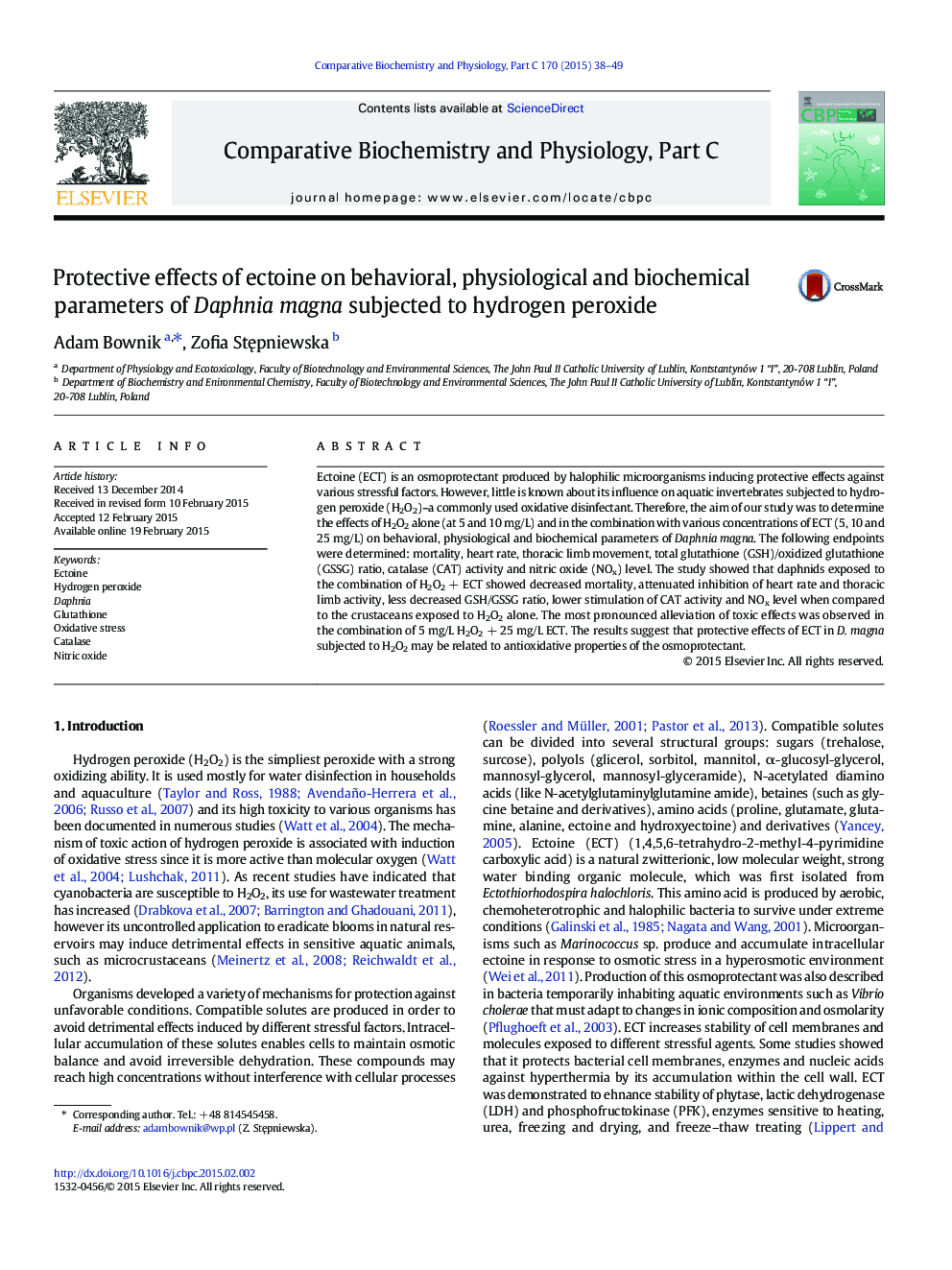| Article ID | Journal | Published Year | Pages | File Type |
|---|---|---|---|---|
| 1977236 | Comparative Biochemistry and Physiology Part C: Toxicology & Pharmacology | 2015 | 12 Pages |
Ectoine (ECT) is an osmoprotectant produced by halophilic microorganisms inducing protective effects against various stressful factors. However, little is known about its influence on aquatic invertebrates subjected to hydrogen peroxide (H2O2)–a commonly used oxidative disinfectant. Therefore, the aim of our study was to determine the effects of H2O2 alone (at 5 and 10 mg/L) and in the combination with various concentrations of ECT (5, 10 and 25 mg/L) on behavioral, physiological and biochemical parameters of Daphnia magna. The following endpoints were determined: mortality, heart rate, thoracic limb movement, total glutathione (GSH)/oxidized glutathione (GSSG) ratio, catalase (CAT) activity and nitric oxide (NOx) level. The study showed that daphnids exposed to the combination of H2O2 + ECT showed decreased mortality, attenuated inhibition of heart rate and thoracic limb activity, less decreased GSH/GSSG ratio, lower stimulation of CAT activity and NOx level when compared to the crustaceans exposed to H2O2 alone. The most pronounced alleviation of toxic effects was observed in the combination of 5 mg/L H2O2 + 25 mg/L ECT. The results suggest that protective effects of ECT in D. magna subjected to H2O2 may be related to antioxidative properties of the osmoprotectant.
